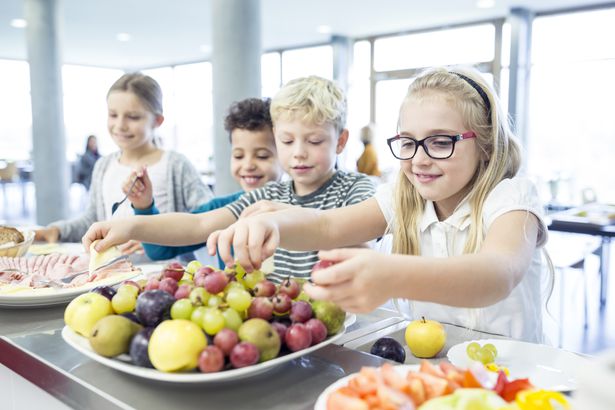Introduction:
In recent years, there has been a growing movement towards healthier and more sustainable food options in School Lunches. One notable shift has been the transition from processed chicken nuggets to farm-to-table lunches. This change not only benefits the health of students but also supports local farmers and promotes environmental sustainability. In this article, we will explore the reasons behind this transition and the positive impact it has on students, communities, and the planet.
Health Benefits:
One of the primary reasons for the shift from nuggets to farm-to-table lunches is the focus on improving the health of students. Processed chicken nuggets often contain high levels of sodium, unhealthy fats, and preservatives. On the other hand, farm-to-table lunches prioritize fresh, locally sourced ingredients that are rich in nutrients. By providing students with wholesome meals, schools can contribute to their overall well-being and help establish healthy eating habits from a young age.

Supporting Local Farmers:
Another significant advantage of farm-to-table lunches is the support they provide to local farmers. By sourcing ingredients from nearby farms, schools can help sustain local agricultural communities. This not only strengthens the local economy but also fosters a sense of community and connection between farmers and students. Additionally, purchasing directly from farmers reduces the carbon footprint associated with long-distance transportation, further promoting sustainability.
Environmental Sustainability:
The transition to farm-to-table lunches aligns with the broader goal of promoting environmental sustainability. Industrial food production, including the production of processed chicken nuggets, often involves intensive resource consumption and contributes to greenhouse gas emissions. By opting for locally sourced ingredients, schools can reduce their carbon footprint and support sustainable farming practices. Moreover, farm-to-table lunches encourage students to develop an appreciation for the environment and understand the importance of sustainable food systems.
Educational Opportunities:
Farm-to-table lunches also provide valuable educational opportunities for students. By incorporating locally sourced ingredients into their meals, schools can teach students about the benefits of sustainable agriculture, the importance of seasonal eating, and the value of supporting local food systems. This hands-on approach to learning fosters a deeper understanding of where food comes from and encourages students to make informed choices about their diet.
Challenges and Solutions:
While the transition from nuggets to farm-to-table lunches offers numerous benefits, it is not without its challenges. One common obstacle is the higher cost associated with sourcing local, organic ingredients. However, schools can overcome this challenge by seeking partnerships with local farmers, applying for grants, and exploring creative solutions such as community-supported agriculture programs. Additionally, investing in kitchen infrastructure and staff training can help schools efficiently prepare and serve farm-to-table meals.
Table: Key Points of Farm-to-Table School Lunches
| Key Points | Description |
|---|---|
| Fresh, Local Ingredients | Emphasizes the use of locally sourced, seasonal produce and ingredients |
| Nutritional Benefits | Provides students with balanced meals rich in vitamins, minerals, and fiber |
| Improved Academic Performance | Studies show a correlation between healthy eating and academic success |
| Environmental Sustainability | Reduces carbon footprint and supports sustainable farming practices |
| Community Engagement | Fosters connections between schools, farmers, and local food producers |
| Culinary Education | Introduces students to diverse flavors, coo |
Comparative Table: Traditional School Lunches vs. Farm-to-Table Lunches
| Features | Traditional School Lunches | Farm-to-Table Lunches |
|---|---|---|
| Ingredient Quality | Processed and pre-packaged | Fresh and locally sourced |
| Nutritional Value | Limited variety and nutrients | Balanced and nutrient-rich |
| Environmental Impact | High carbon footprint | Supports sustainable practices |
| Student Engagement | Limited interest and participation | Increased interest and awareness |
| Community Connections | Minimal interaction with local food producers | Strong community ties |
| Culinary Education | Basic and repetitive meals |
Conclusion:
The transition from processed chicken nuggets to farm-to-table lunches represents a positive shift towards healthier, more sustainable food options in schools. By prioritizing the health of students, supporting local farmers, promoting environmental sustainability, and providing educational opportunities, schools can create a positive impact on the well-being of students, communities, and the planet. As this movement continues to gain momentum, it is crucial for schools, parents, and policymakers to collaborate and ensure that all students have access to nutritious and sustainable meals.











